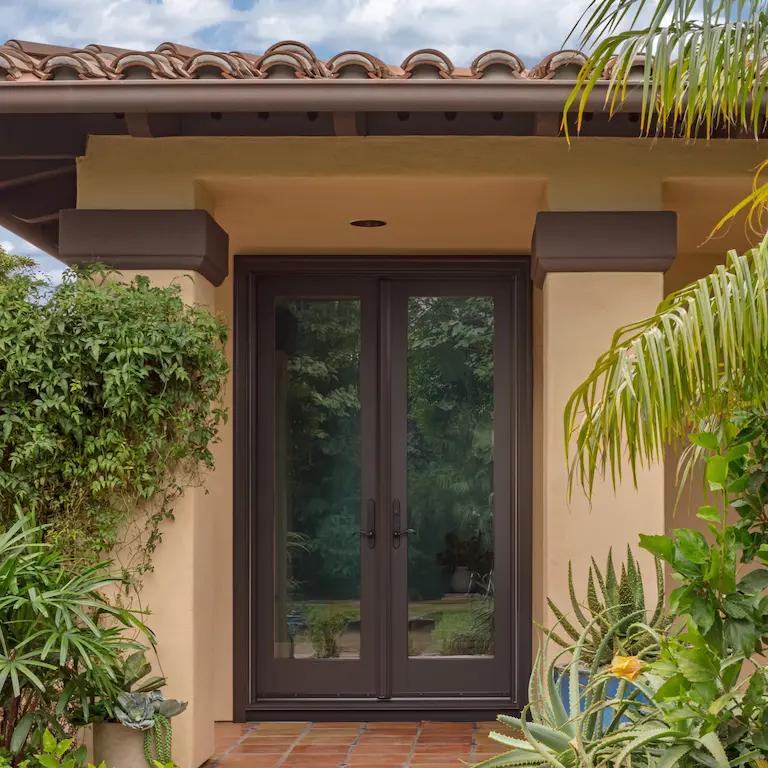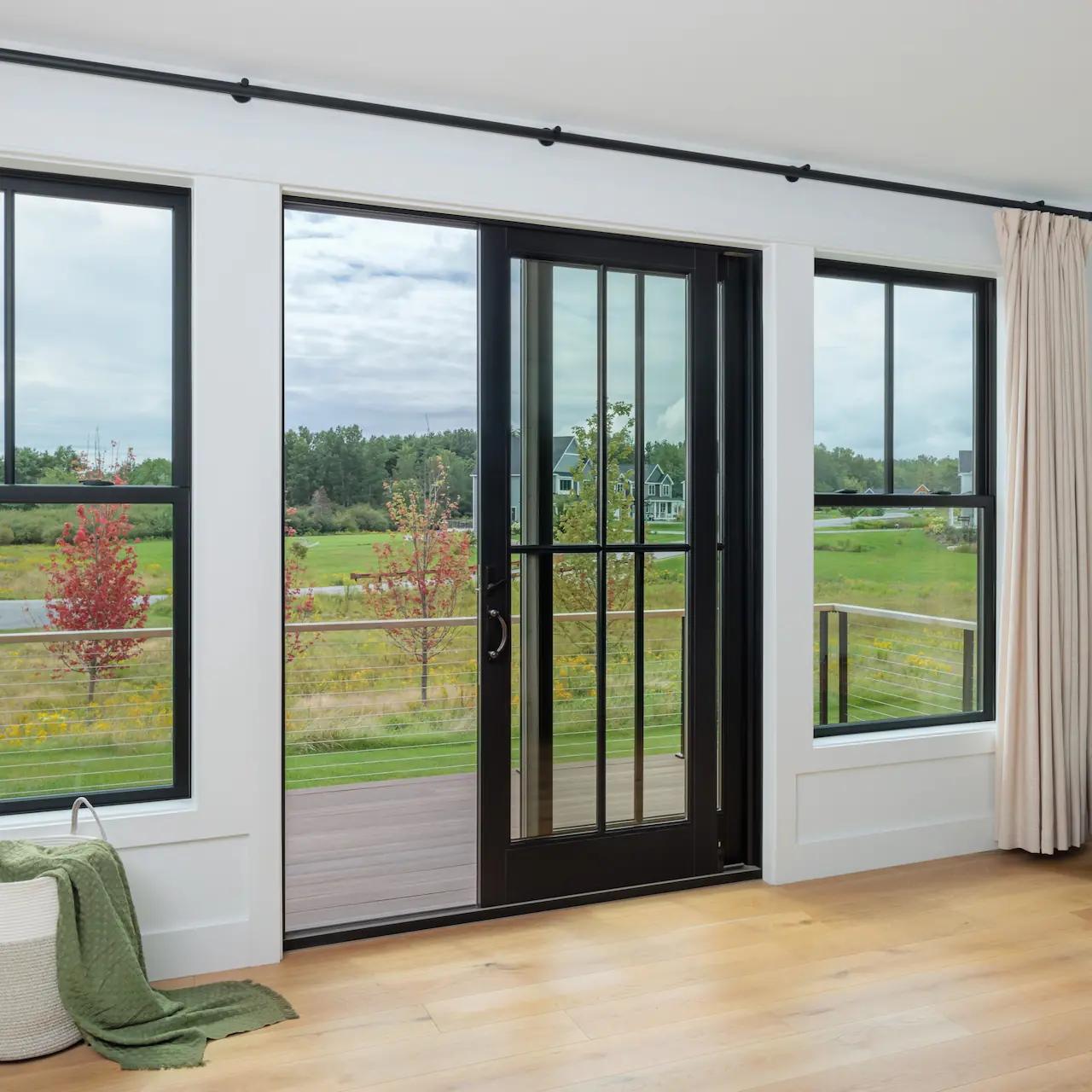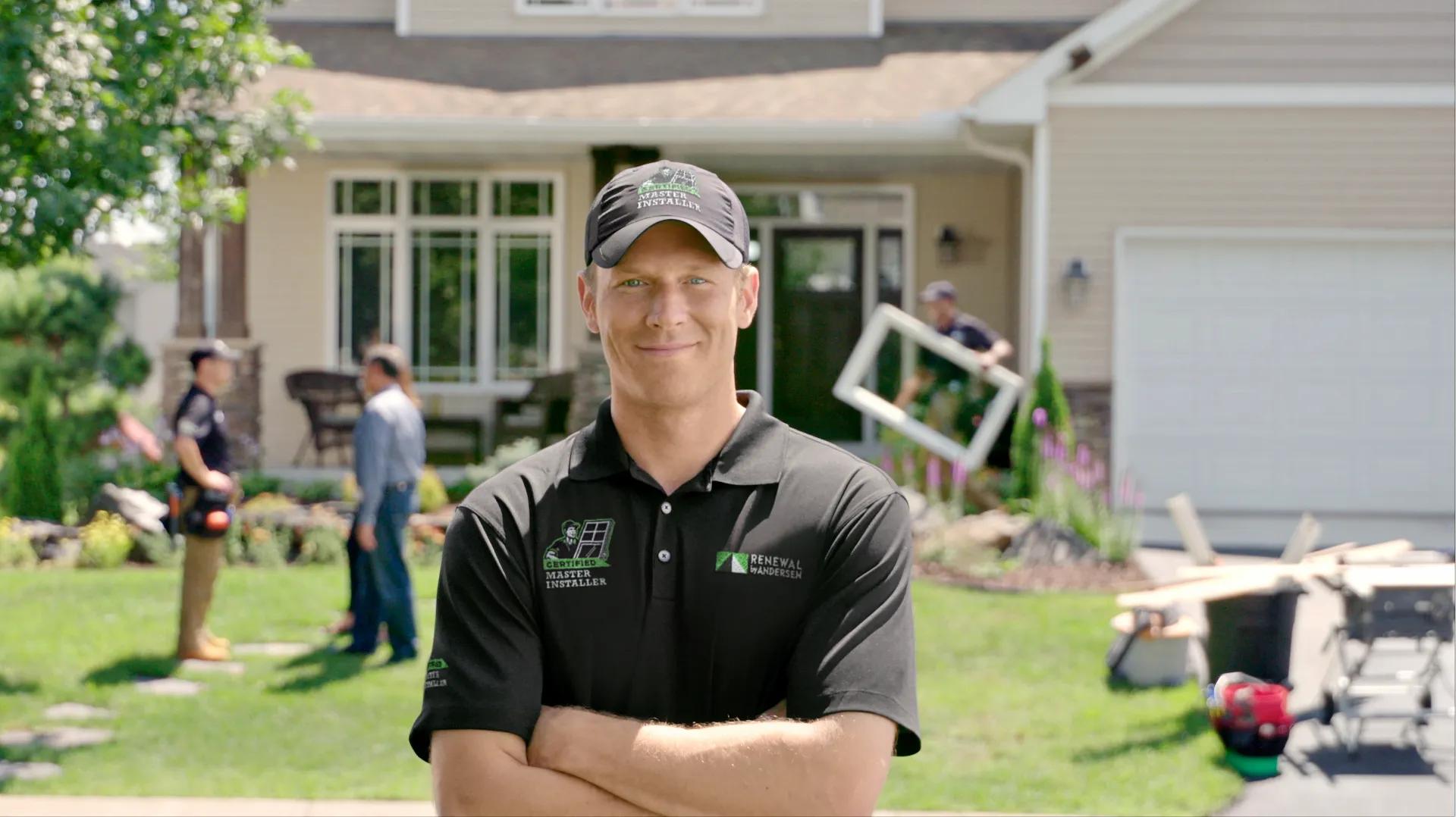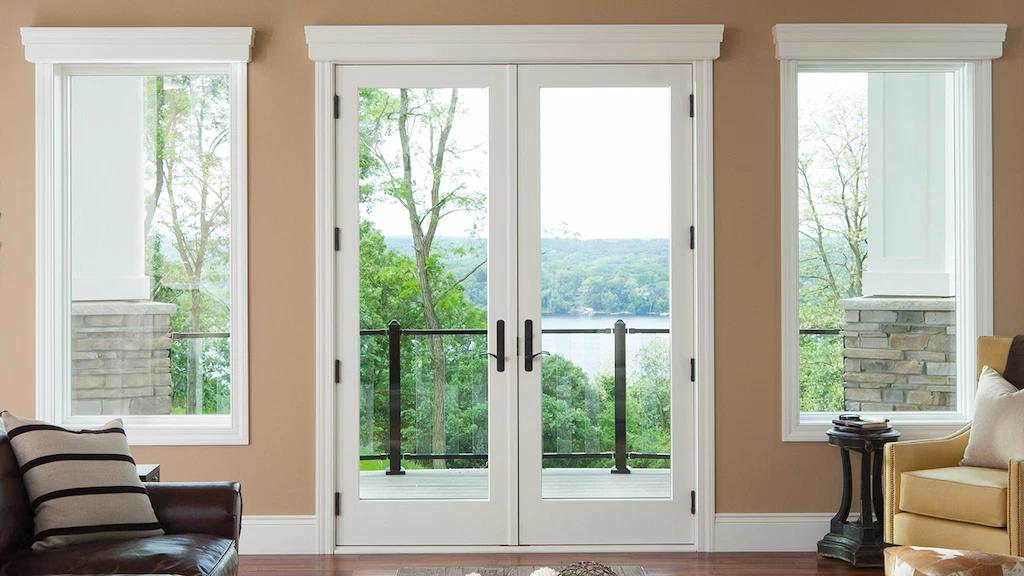French doors have long been admired for their timeless elegance and functionality. These classic doors, characterized by their multiple glass panes, not only enhance the aesthetic appeal of your home but also provide practical benefits like increased natural light and improved flow between spaces. If you're considering adding French doors to your home, this comprehensive guide will help you understand everything from styles and materials to installation considerations.
What Are French Doors?

French doors are hinged doors that typically come in pairs, with glass panes extending for most of their length. Originally developed in France during the Renaissance period, these doors were designed to allow maximum light into rooms while maintaining architectural balance. Today, they serve as both functional entryways and stylish design elements in homes of various architectural styles.
Key Features of French Doors
- Multiple glass panes (traditionally divided by muntins or grilles)
- Typically installed in pairs, though single French doors are also available
- Hinged design that allows doors to swing open
- Available in inswing (opening into a room) or outswing (opening outward) configurations
- Can function as interior doors between rooms or exterior doors leading to patios, decks, or gardens.
Types of French Doors
French doors come in several configurations to suit different needs and spaces:
Hinged French Doors

The classic design features two doors hinged on opposite sides of the frame, meeting in the middle when closed. These doors can be designed to swing inward (inswing) or outward (outswing), depending on your space requirements and preferences.
Inswing French Doors: Open into your home, requiring interior clearance space for the door swing. This is the most common configuration for exterior applications in areas with harsh weather conditions, as the door seal tightens when pressed against the frame by external elements.
Outswing French Doors: Open outward toward your patio or yard, saving interior space. These can be ideal for smaller rooms where interior door clearance is limited. However, they may not be suitable in areas with heavy snowfall that could block the doors from opening.
Sliding French Doors

For spaces where swing clearance is limited, sliding French doors offer the aesthetic appeal of traditional French doors while operating on a track. One door remains stationary while the other slides horizontally to open. These doors are excellent space-savers for tight areas.
French Door Materials
The material of your French doors affects their appearance, durability, energy efficiency, and maintenance requirements:
Wood
Wood French doors offer classic beauty and can be stained or painted to match your home's aesthetic. They provide excellent insulation but require regular maintenance to prevent warping, rotting, or swelling in humid conditions.
High-quality wood French doors are often constructed with engineered lumber and laminated-veneer lumber for maximum longevity, with sealants and treatments to resist fungus and insects.
Advanced Composite Door Construction
Renewal by Andersen patio doors are engineered with a combination of materials designed for strength, durability, and low maintenance. Many door panels are constructed with a core of engineered or natural wood, such as pine, providing excellent structural stability.
Vinyl
Vinyl French doors are affordable, energy-efficient, and require minimal maintenance. They resist moisture damage but may not offer the same aesthetic appeal as wood or composite options. However, the weight of large expanses of glass will make vinyl sash frames and master frames bow over a short period of time.
Aluminum-Clad
These doors feature a wood interior with aluminum exterior cladding, offering the beauty of wood inside with weather-resistant protection outside. The aluminum cladding helps guard against cracking, sagging, and warping.
However, a significant consideration with aluminum is energy efficiency. As a metal, aluminum is a natural conductor, meaning it readily transfers outdoor temperatures to the interior of your home. In cold climates, this conductivity can cause the interior surfaces of the door to become cold enough for condensation and even frost to form, which can lead to ice buildup inside your home.
Glass Options for French Doors

The glass in your French doors plays a crucial role in energy efficiency, security, and privacy:
Energy-Efficient Glass
Modern French doors often feature double or triple-pane glass with Low-E (low emissivity) coatings that reflect infrared light, keeping heat inside during winter and outside during summer. Some glass options include argon gas fills between panes for additional insulation.
Safety Glass
Tempered glass, which is heat-treated to be stronger than standard glass, is commonly used in French doors. If broken, it shatters into small, relatively harmless pieces rather than dangerous shards.
Decorative Glass
Various decorative options are available, including:
- Frosted or obscure glass for privacy
- Tinted glass to reduce glare and UV exposure
- Patterned or textured glass for aesthetic appeal
- Stained glass for a distinctive look
Grille Options

Grilles (also called muntins) are the dividers that separate glass panes in French doors. They can dramatically affect the appearance of your doors:
Traditional Divided Light
True divided light features individual panes of glass separated by muntins, as in historical French doors. This construction provides authentic character but may be less energy-efficient than modern alternatives.
Simulated Divided Light
These grilles are applied to the surface of a single pane of glass, creating the appearance of divided lights without compromising energy efficiency. They can be installed on both the interior and exterior surfaces.
Between-the-Glass Grilles
Grilles placed between glass panes offer easy cleaning, as they don't collect dust on the surface of the door. They provide a more subtle divided light appearance.
Grille Patterns
Common patterns include:
- Colonial: Evenly spaced rectangular grilles
- Prairie: Grilles around the perimeter, leaving the center open
- Custom: Personalized patterns to match your home's architecture
Hardware and Security Features
The hardware on your French doors affects both their appearance and functionality:
Handle Sets and Locks
French doors typically feature handle sets on both doors, with an active handle on the primary operating door and a passive handle on the secondary door. Multi-point locking systems that secure the door at several points along the frame provide enhanced security and a weathertight seal.
Additional Security Options
- Foot locks that secure the bottom of the door
- Auxiliary locks for added protection
- Keyed exterior locks for controlled access
Installation Considerations

Proper installation is crucial for the performance and longevity of French doors:
Professional vs. DIY Installation
While experienced DIYers might tackle interior French door installation, exterior French doors are complex to install properly. Professional installation ensures:
- Correct alignment and operation
- Proper weather sealing
- Structural integrity
- Compliance with building codes
Replacing Existing Doors vs. New Construction
When replacing a patio door, it's important to understand the different installation methods used in the industry. Some companies may perform what is known as an "insert" replacement, where the new door unit is simply fitted into the master frame of the old door. This approach can fail to address underlying issues.
A thorough, professional installation process involves removing the entire existing patio door, including its frame, down to the rough opening of your home. This comprehensive method provides several key advantages:
- Inspection for Hidden Damage: It allows installers to inspect the home's structure for any hidden problems, such as water damage or rot, which can then be addressed before the new unit is installed.
- Ensures a Proper Fit: By working from the rough opening, the new patio door can be custom-fitted, set, shimmed, and insulated to ensure a secure, weathertight seal.
- Maximizes Your View: A full-frame replacement doesn't add a frame within a frame, ensuring you get the maximum possible glass area and view from your new patio door.
This complete approach ensures that the new door not only looks beautiful but is also installed correctly for long-term performance and peace of mind.
Weather Considerations
In regions with extreme weather conditions, special considerations apply:
- In hurricane-prone areas, impact-resistant glass and reinforced frames may be necessary
- In cold climates, proper insulation around the frame is essential
- In hot, sunny areas, Low-E glass coatings help reduce heat gain
Energy Efficiency

French doors with large glass areas can affect your home's energy efficiency:
Energy Ratings to Consider
- U-Factor: Measures how well the door prevents heat transfer (lower is better)
- Solar Heat Gain Coefficient (SHGC): Indicates how much solar radiation passes through (lower numbers block more heat)
- Air Leakage: Measures how much air infiltrates through the door assembly
Improving Energy Efficiency
- Choose doors with ENERGY STAR® certification
- Select doors with proper weatherstripping and tight seals
- Consider Low-E glass coatings and gas-filled panes
- Ensure professional installation with proper insulation around the frame
Maintenance and Care
Proper maintenance extends the life and preserves the appearance of your French doors:
Wood Doors
- Inspect annually for signs of moisture damage or paint/finish wear
- Refinish as needed to protect the wood (typically every 2-5 years, depending on exposure)
- Clean glass with non-abrasive cleaners
Composite Doors
- Clean frames with mild soap and water
- Inspect weatherstripping annually and replace if damaged
- Lubricate hinges and hardware as needed
- Inspect thoroughly. Possible expansion and contraction of the sash/master frames can cause major damage if left unchecked.
Hardware Maintenance
- Tighten loose screws
- Lubricate moving parts annually
- Clean metal finishes with appropriate products to prevent tarnishing
Cost Considerations
The cost of French doors varies widely based on several factors:
Factors Affecting Price
- Material (wood typically costs more than vinyl)
- Size and configuration
- Glass type and energy efficiency features
- Hardware quality
- Custom vs. standard sizes
- Installation complexity
Long-Term Value
While initial costs are important, consider the long-term value:
- Energy-efficient doors may reduce heating and cooling costs
- Quality materials require less maintenance and replacement
- Properly installed doors prevent costly water damage and air leakage
- French doors can increase your home's resale value

French doors can complement various architectural styles:
Traditional Homes
In traditional homes, consider wood French doors with divided light patterns that match the historical period of your home.
Contemporary Homes
For modern aesthetics, sleek French doors with minimal grille patterns or clear glass create a clean look that maximizes views and light.
Indoor/Outdoor Living
French doors excel at creating seamless transitions between indoor and outdoor spaces. Consider how the doors will function in relation to your patio, deck, or garden areas.
Choosing the Right French Doors for Your Home
When selecting French doors, consider these key factors:
- Location and function: Interior doors between rooms have different requirements than exterior doors exposed to weather.
- Available space: Ensure you have adequate clearance for door swing, or consider sliding French doors for tight spaces.
- Climate considerations: Choose appropriate materials and glass options for your local weather conditions.
- Architectural style: Select doors that complement your home's design aesthetic.
- Budget: Balance initial cost with long-term value and energy savings.
- Security needs: Consider additional security features for exterior doors.
Professional Consultation

A professional consultation can help you navigate the many options available and ensure you select the right French doors for your specific needs. During a consultation, an expert can:
- Assess your space and recommend appropriate door sizes and configurations
- Discuss material options based on your climate and maintenance preferences
- Explain glass and energy efficiency options
- Provide accurate measurements for custom doors
- Identify any structural or installation challenges
- Offer a detailed estimate for both products and installation
Conclusion
French doors offer a timeless combination of beauty and functionality that can transform your living spaces. Whether you're looking to enhance the flow between interior rooms or create a stunning connection to your outdoor areas, the right French doors can make a significant impact on both the aesthetics and functionality of your home.
By understanding the various options available—from materials and glass types to hardware and installation considerations—you can make informed decisions that will provide lasting satisfaction. With proper selection, installation, and maintenance, your French doors will be a beautiful and functional feature of your home for many years to come.
Remember that quality matters when it comes to French doors. Investing in well-constructed doors with proper installation will pay dividends in terms of energy efficiency, security, and longevity. Consider consulting with professionals who specialize in window and door replacement to ensure you select the best options for your specific needs and home design.
Schedule a Consultation
